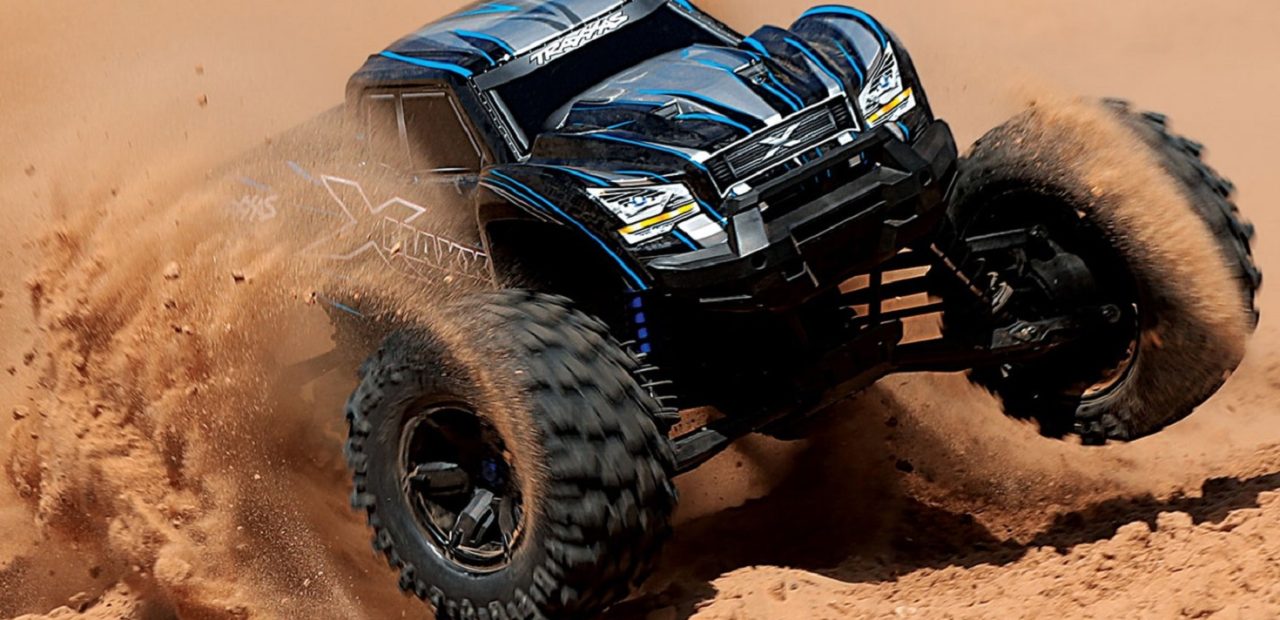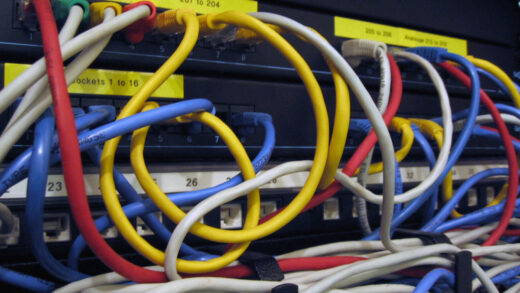A Guide to the Different Types of Batteries Used in RC Vehicles
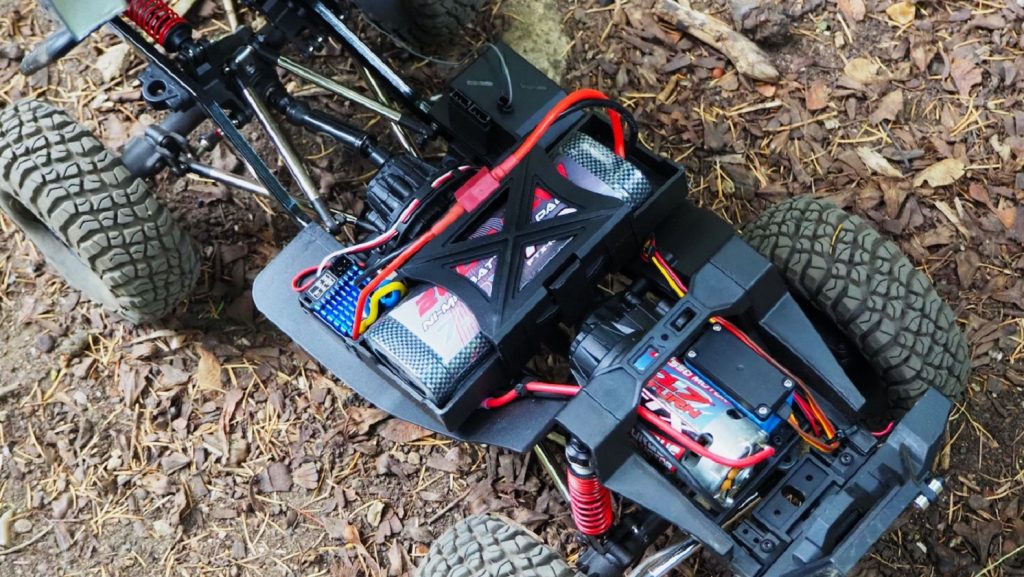
For anyone delving deep into the world of RC vehicles, it’s the smaller and often forgotten details that can make a huge difference in how your vehicle performs. It’s also these details and parts that determine the thrills you get. Consider the case for batteries. All RC cars, trucks, rock crawlers, buggies, planes, and boats require batteries to work.
It’s not just the energy they feed into the motor, but also how they control vital parts such as the ESC and the radio controllers, making adjusting speed and direction possible. While RTR kits have everything packaged, more advanced RC vehicles will require you to purchase the batteries separately. This opens up more possibilities, and ultimately offers more fun.
Stepping up to different types of RC battery than the one you have will mean better performance, increased endurance, and faster charging times. Vehicles will have better acceleration times, and higher top speeds, as well as more grunt in challenging situations. The endurance side of things means the fun lasts longer without being interrupted by a dead battery halfway into a race.
A higher-end battery can also save you money with fewer replacements in the long run. And finally, quicker charging times are just more convenient. Still, not all batteries fare the same, so choosing one that meets your needs should be done with consideration.
Contents
Battery Types
Besides the Nickel-Cadmium (Ni-CD) variants that have joined dinosaurs in obsolescence, today’s RC vehicles and drones use either a Nickel Metal Hydride (Ni-MH) or Lithium Polymer (Li-Po) battery. They differ in their chemistry, or the materials they’re made of, and how these materials react to produce electricity. Each has its pros and cons.
NiMH
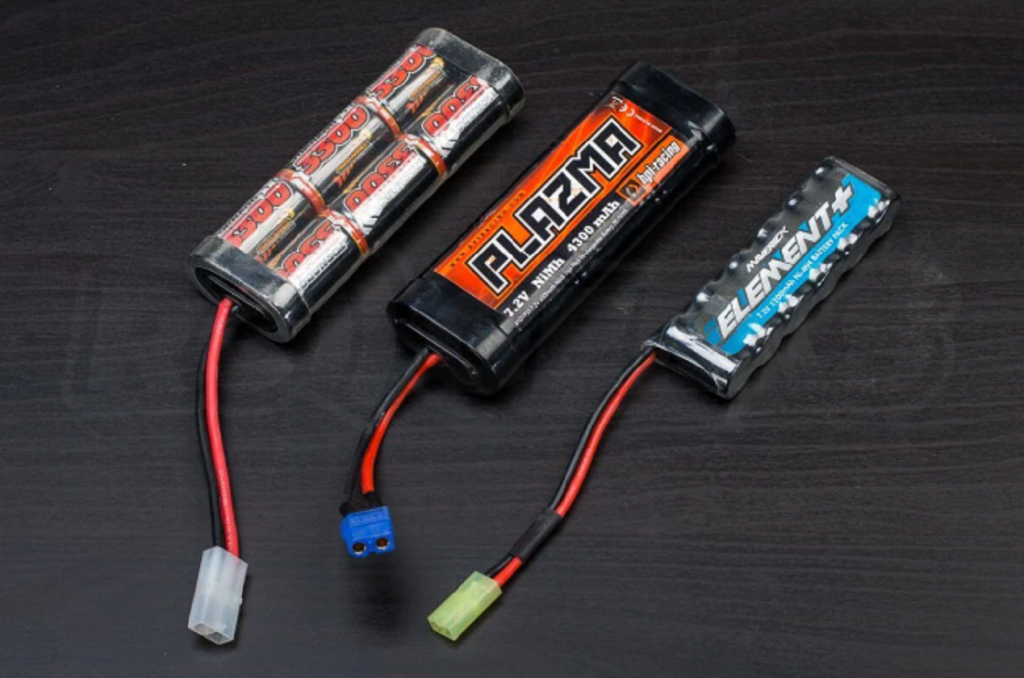
The majority of ready-to-run (RTR) RC vehicles come with a Ni-MH battery included. This isn’t a bad thing as Ni-MH batteries are generally safe to use, exceptionally reliable, and don’t need much in the way of any special maintenance.
There are downsides though, meaning the bigger overall dimensions make them heavier than comparable lithium polymer variants, and they’re less efficient, losing voltage as they discharge. The last bit impacts performance.
The RC vehicle will become slower as the battery empties. One way to recognise a Nickel Metal Hydride battery is the higher number of individual rounded cells, often stacked in a standard or ‘stick’ configuration to fit most vehicles.
LiPo
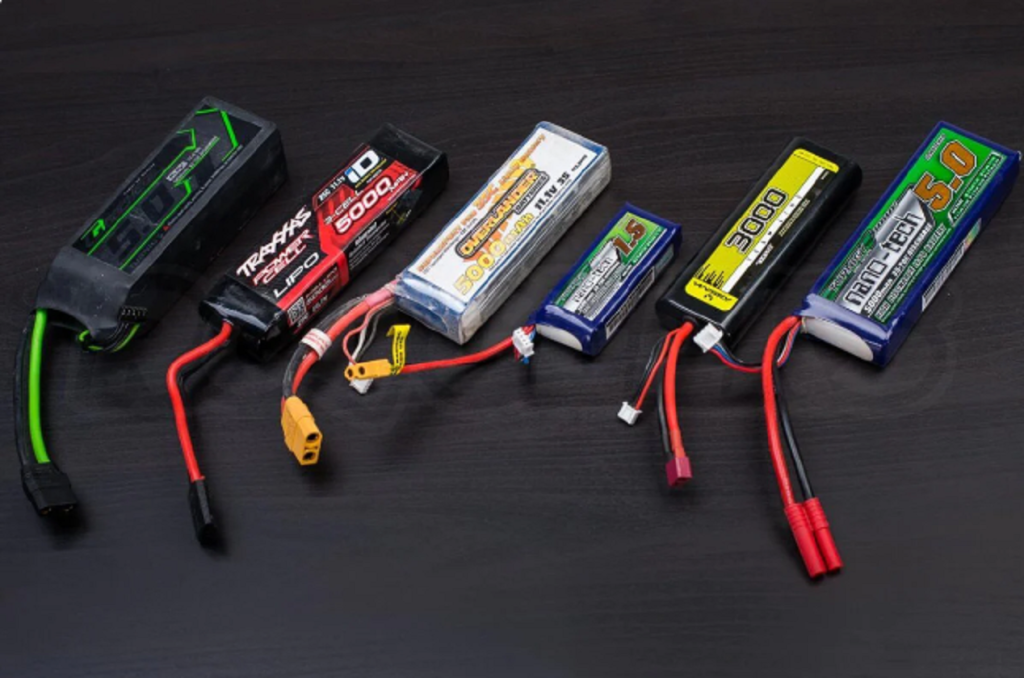
While some RTR vehicles come with LiPo batteries, these are often bought separately and used in more expensive building kits. A LiPo RC battery is much lighter, has low internal resistance to increase power delivery, and can maintain the same voltage despite nearing a very low charge.
All this roughly translates to more speed and for extended periods than what a comparable Ni-MH battery can manage. This comes at a higher cost, requires protective circuitry and a ‘balance’ charger for a safe top-up. The cell count is also lower (2, 3, 4, or 6 compared to 6,7, or 8 in a NI-MH) with batteries assuming a more squared shape. Lithium polymer batteries, however, are customisable to fit different vehicles.
Choosing the Right Battery
Getting what’s right for your RC vehicle in terms of reliable RC batteries depends on a few factors. While NI-MH batteries do have their limitations, they’re more than adequate in lighter and smaller entry-level cars, trucks, boats and planes. They’re also much cheaper. The added cost in Li-Po batteries though goes into the newer tech, higher efficiency, and better performance. Basically, horses for courses. To get the best out of either there are a few parameters to pay attention to:
Capacity
The battery capacity determines how long the vehicle will run. Capacity is stated in milli-amp hours. The bigger the number the more juice the unit has. To achieve the same capacity, a NiMH battery needs to be bigger and have more cells. This adds to weight and size.
Voltage
This is what makes the RC vehicle go faster. The different types deliver different voltages. LiPo batteries have cells that can spurt out 3.7V each, while NIMH variants offer 1.2 volts per cell. A typical 2-cell LiPo battery then has a maximum voltage of 7.2V, and the same can be achieved with six cells in a typical Ni-MH battery. Bigger 3 and 4-cell LiPo batteries then can supply more power, but only be fitted in RC vehicles with the right componentry (compatible ESCs and over-voltage cut-off) to prevent frying the electronics.
Charging
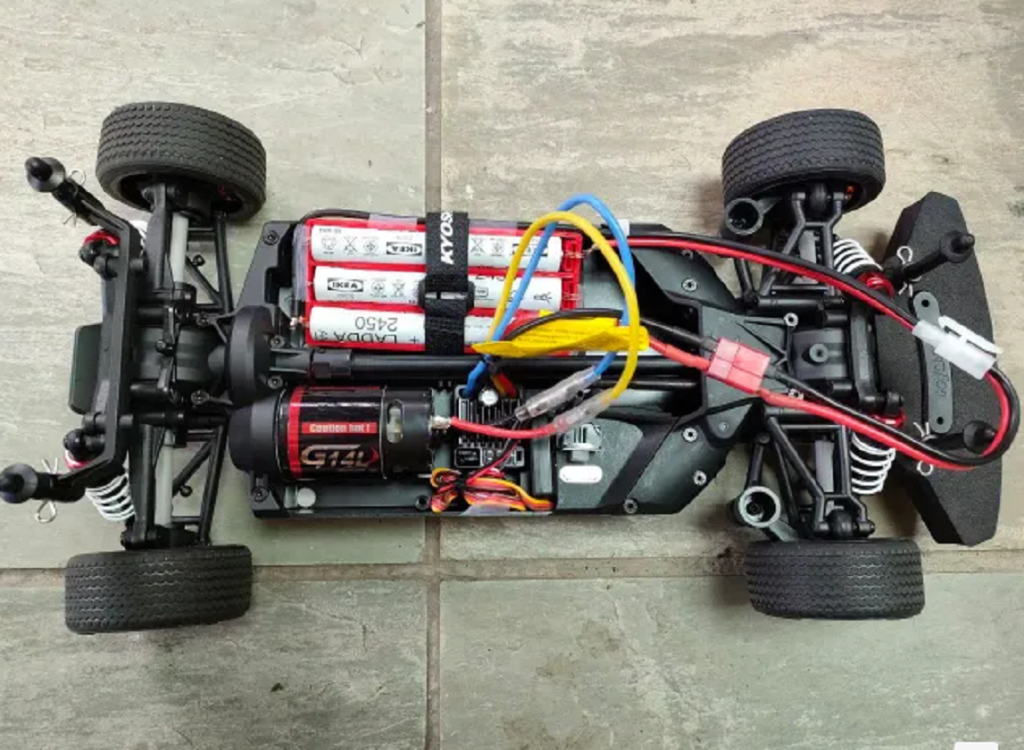
Each battery type has its own charger. LiPo batteries can only be charged with LiPo chargers and NiMH with NiMH chargers. There are also combo chargers that can charge both types but come as much more expensive alternatives.
Amp ratings are the most important factor here, as a charger with a higher rating can significantly cut down on charging times. Chargers with a higher amperage than the battery need to be adjusted to match. It is recommended that a battery be charged for at least one hour in order to maintain longevity.
When charging, also have in mind the connector type the battery comes with. Generally, NIMH has a single main connector, while there’s more variation in the twin connectors in LiPo batteries. Going with the same brand of charger as that with the battery will ensure safe charging.

